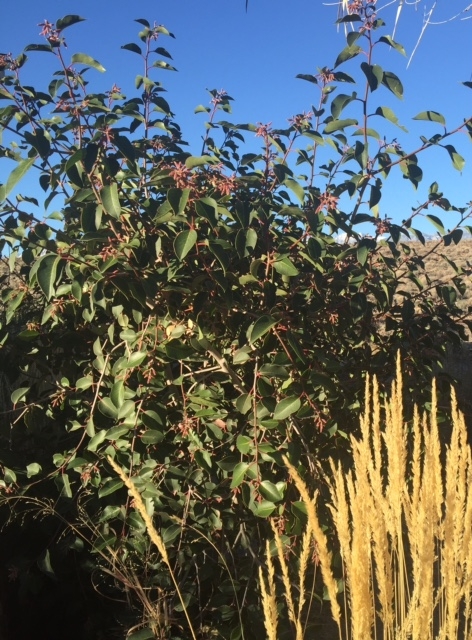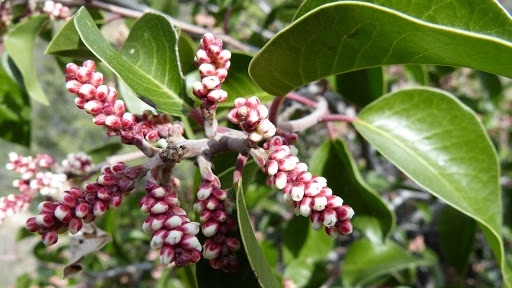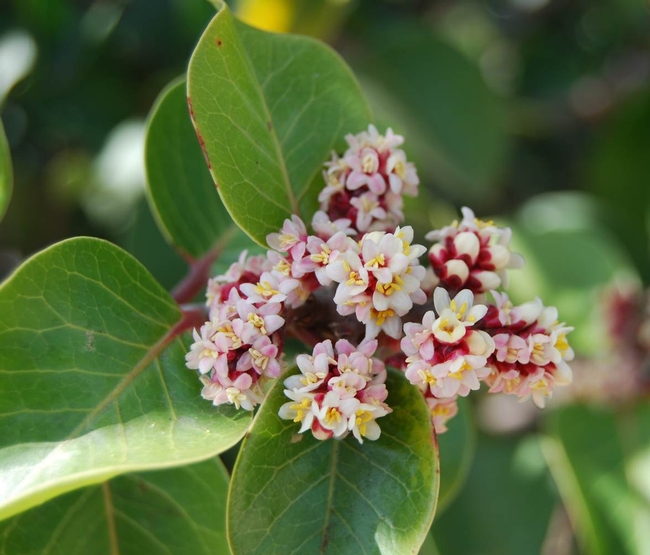When I moved to the wilds of West Chalfant a dozen years ago, I knew that native plants was the only way to go. Because there wasn't much available in local nurseries back then, I turned to the Internet and ordered a big box of plants online from Las Pilitas Nursery. Some have lived and some have died, but the true gem of that box has been a plant I previously did not know—Rhus ovata, commonly called sugarbush. As far as an all-around performer, it may be my very favorite bush.

Rhus ovata is native to chaparral below 4,000 feet, from southern California east to south central Arizona. Though evergreen in its native range, our colder winters can make sugar bush lose its leaves at the very end of the winter. Location can be key. The first few winters were pretty tough on my bushes, and I contemplated removing them. Instead, I cut them back to the ground and relocated them to areas next to the house. What a difference! They have thrived on the south and west sides of our house and generally retain their leaves throughout the year (though the leaves can brown along the margins around February).
As though its good looks weren't reason enough to grow it, sugarbush is incredibly low maintenance. Mine are now close to the house, so they get regular water, but they would do fine without it. On the Las Pilitas website, they say they haven't watered their mother plant in over 20 years! You can prune it however you like or even cut it back to the ground—it will only come back stronger, and unlike the deciduous Rhus species, sugar bush doesn't sucker profusely. The literature suggests wearing gloves when pruning, since, like other sumacs, the sap can cause a rash, but this is not something that has been a problem for me.

The problem, of course, is that I've never seen this plant locally, but look for it on your next trip to Southern California. Here are some native plant nurseries that carry Rhus ovata and a lot of other great plants.
- Theodore Payne Foundation, Sun Valley http://theodorepayne.org
- Tree of Life Nursery, San Juan Capistrano http://www.californianativeplants.com
- Rancho Santa Ana Botanical Garden, Claremont http://www.rsabg.org/grow-native-nursery
- Las Pilitas Nursery, Escondido http://www.laspilitas.com
Links provided for your convenience. No endorsement intended or implied.
